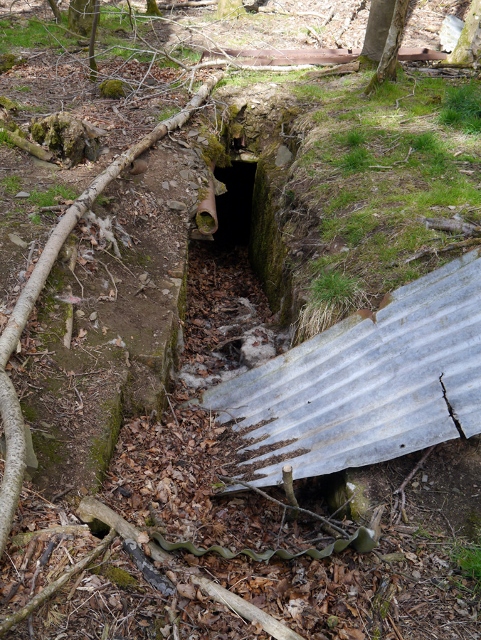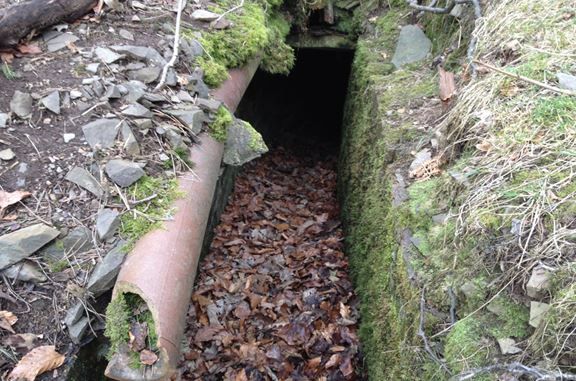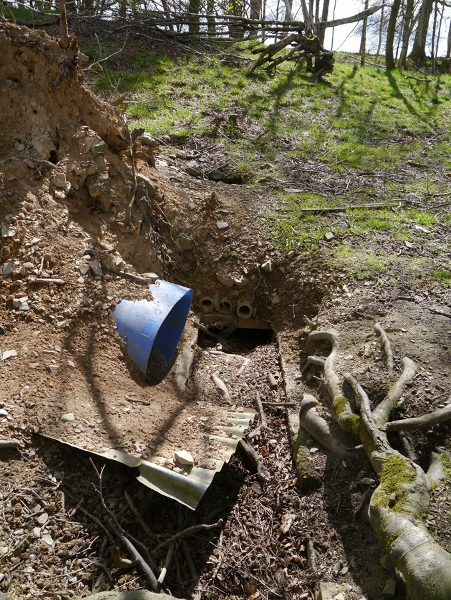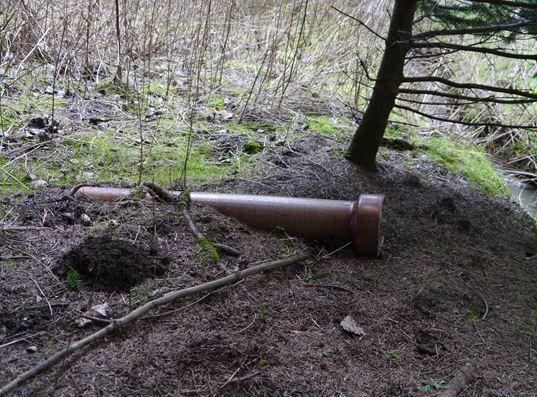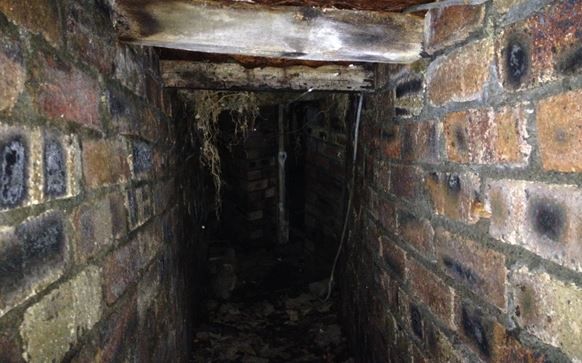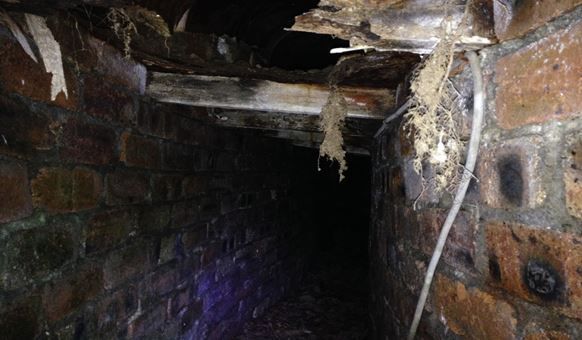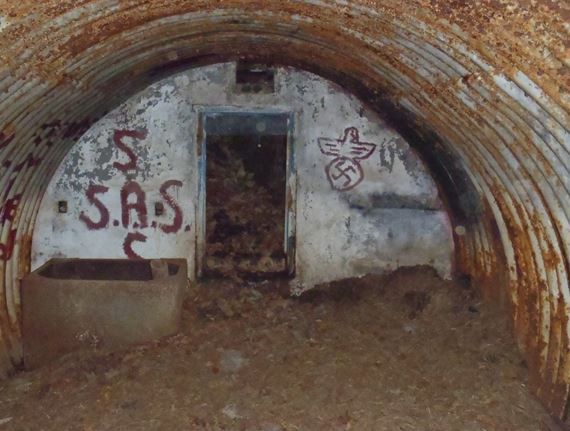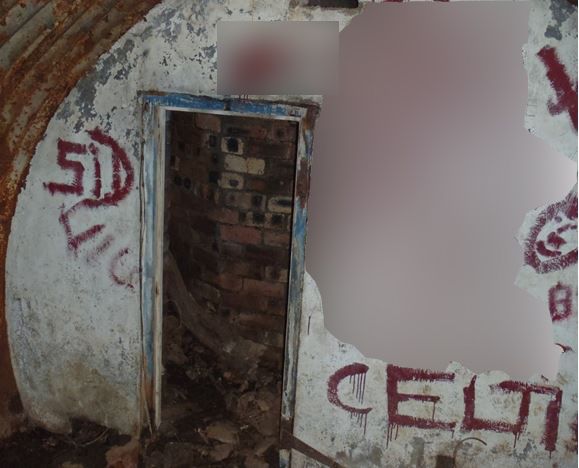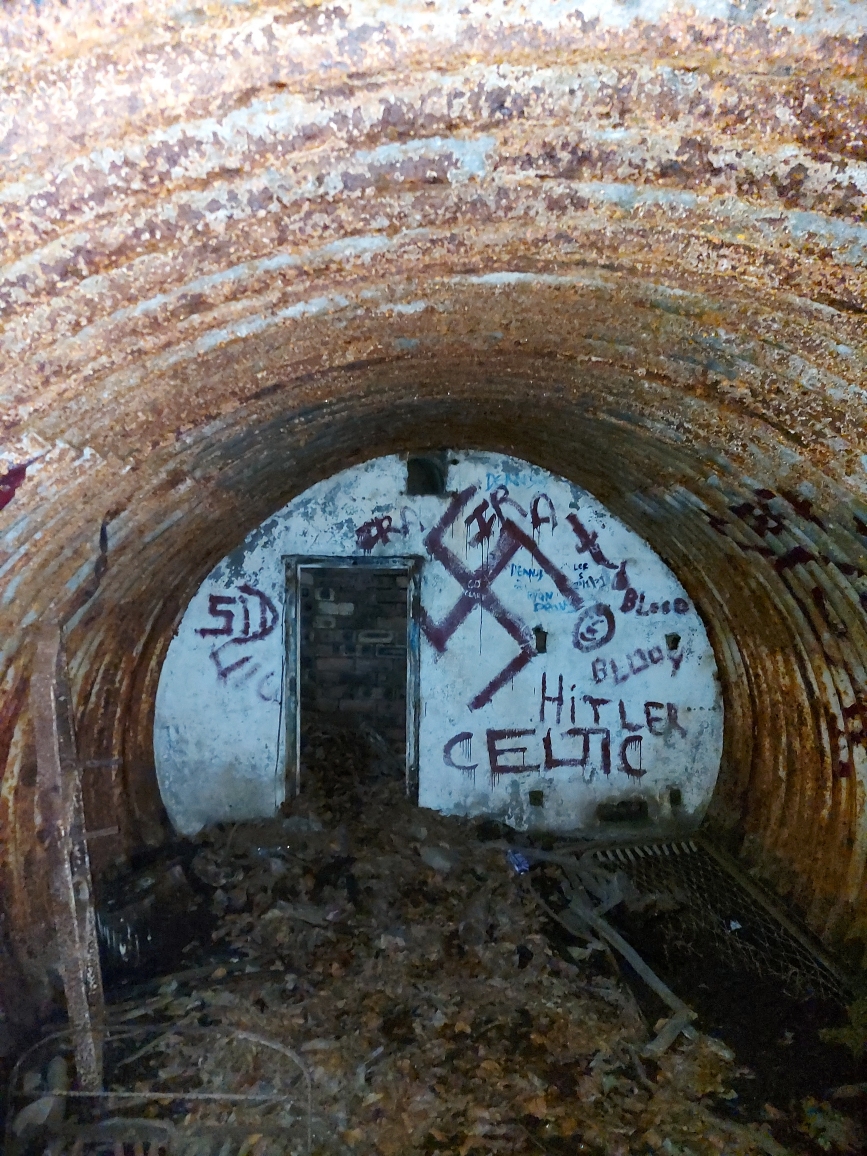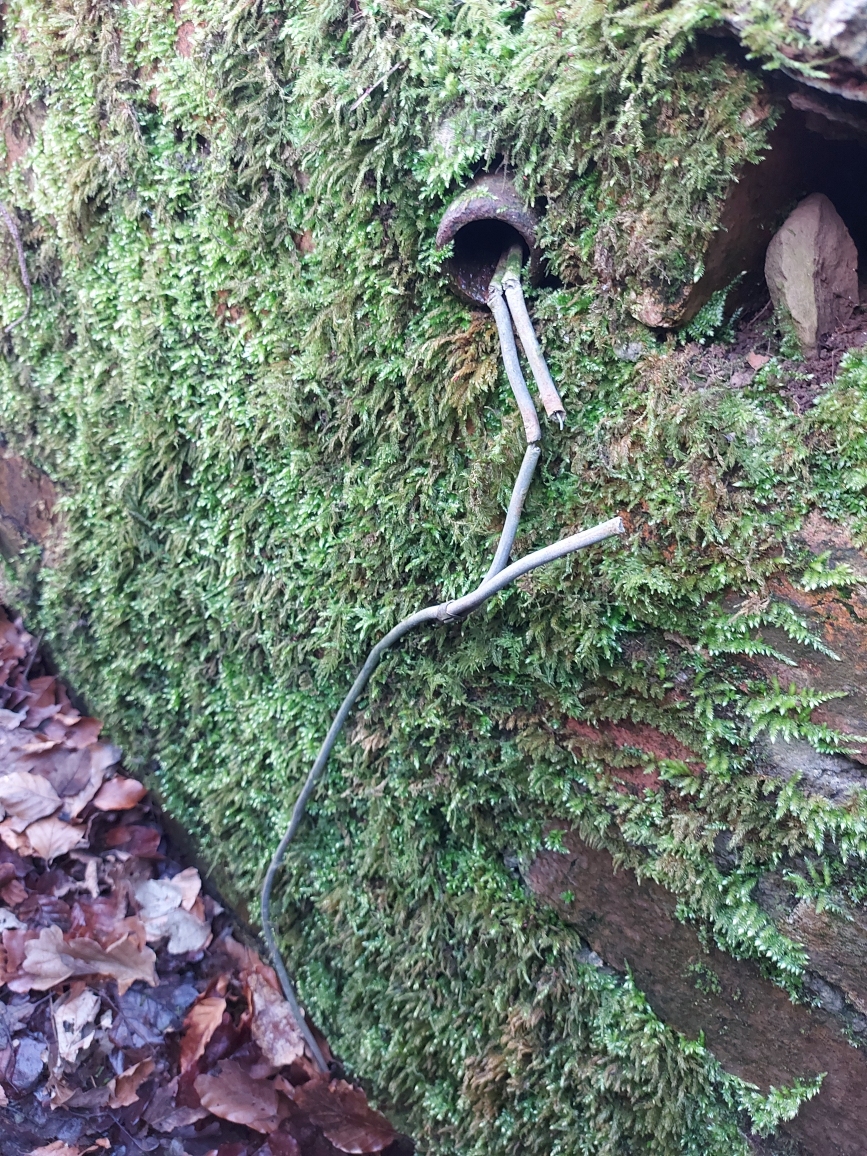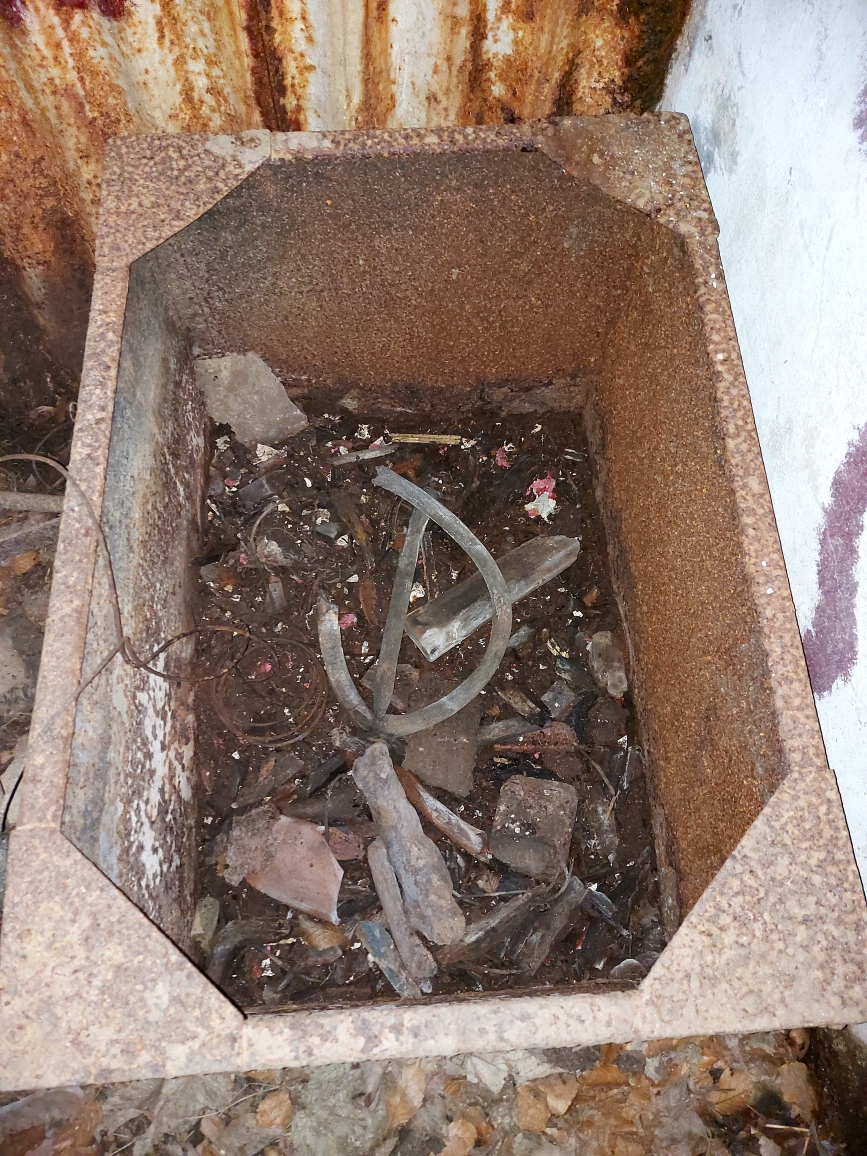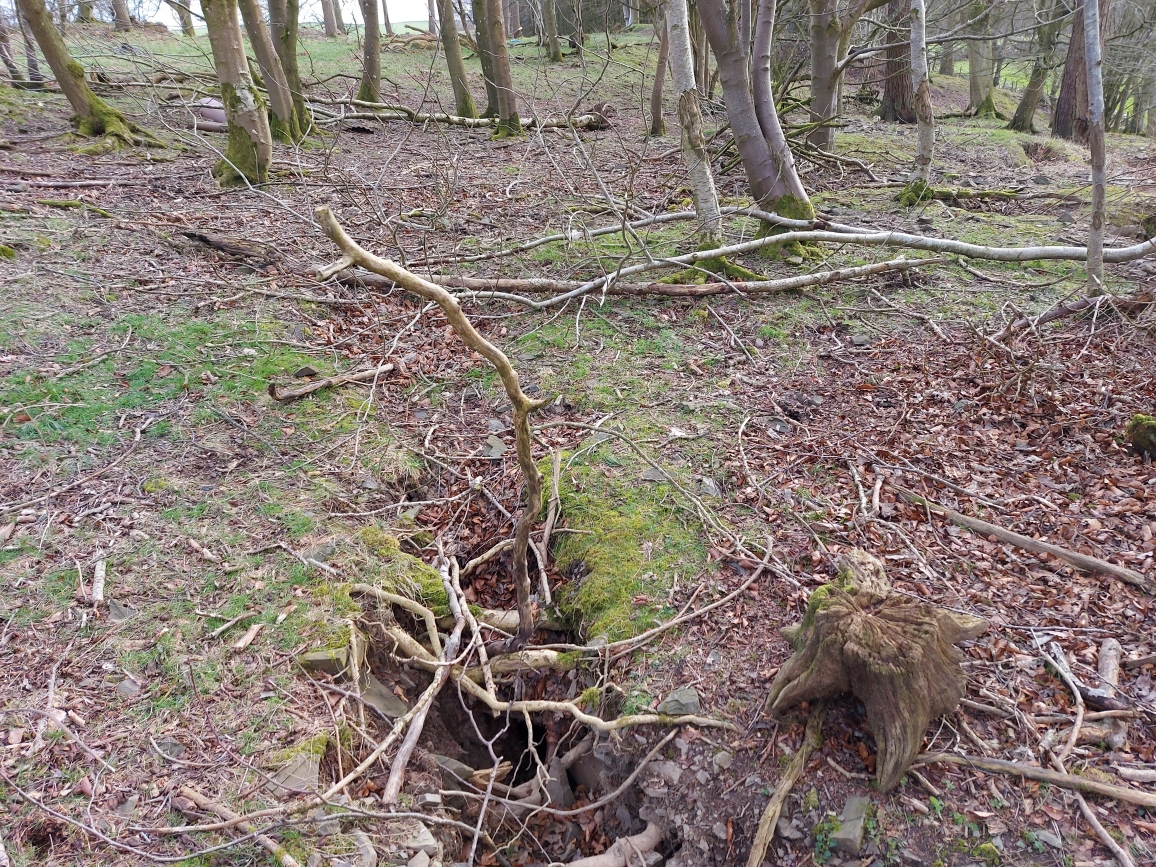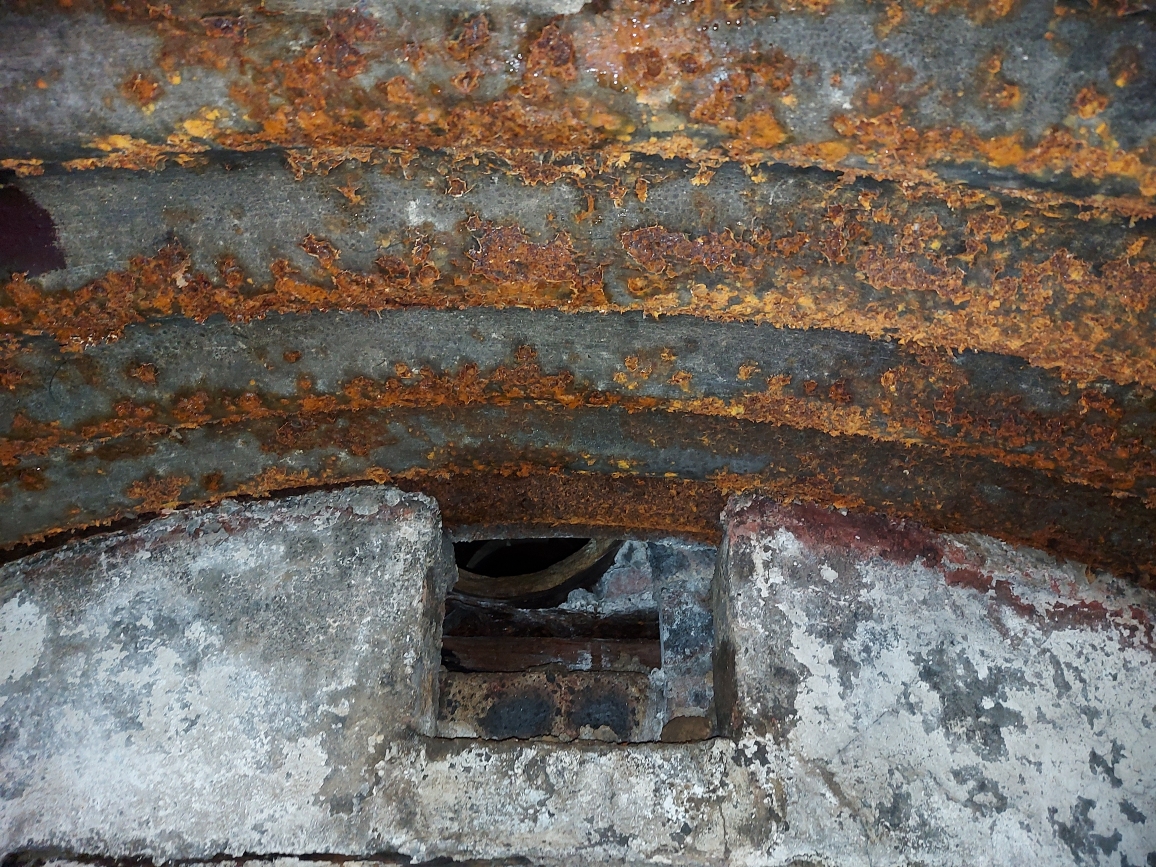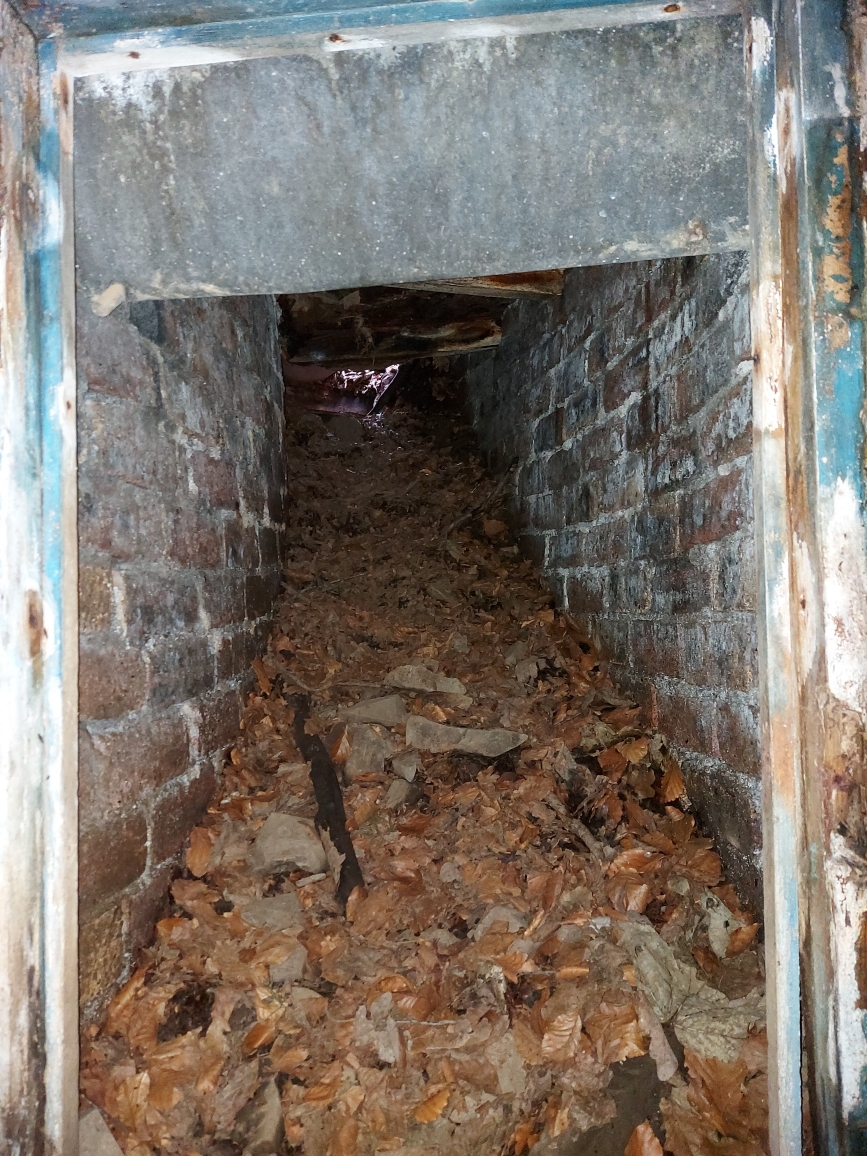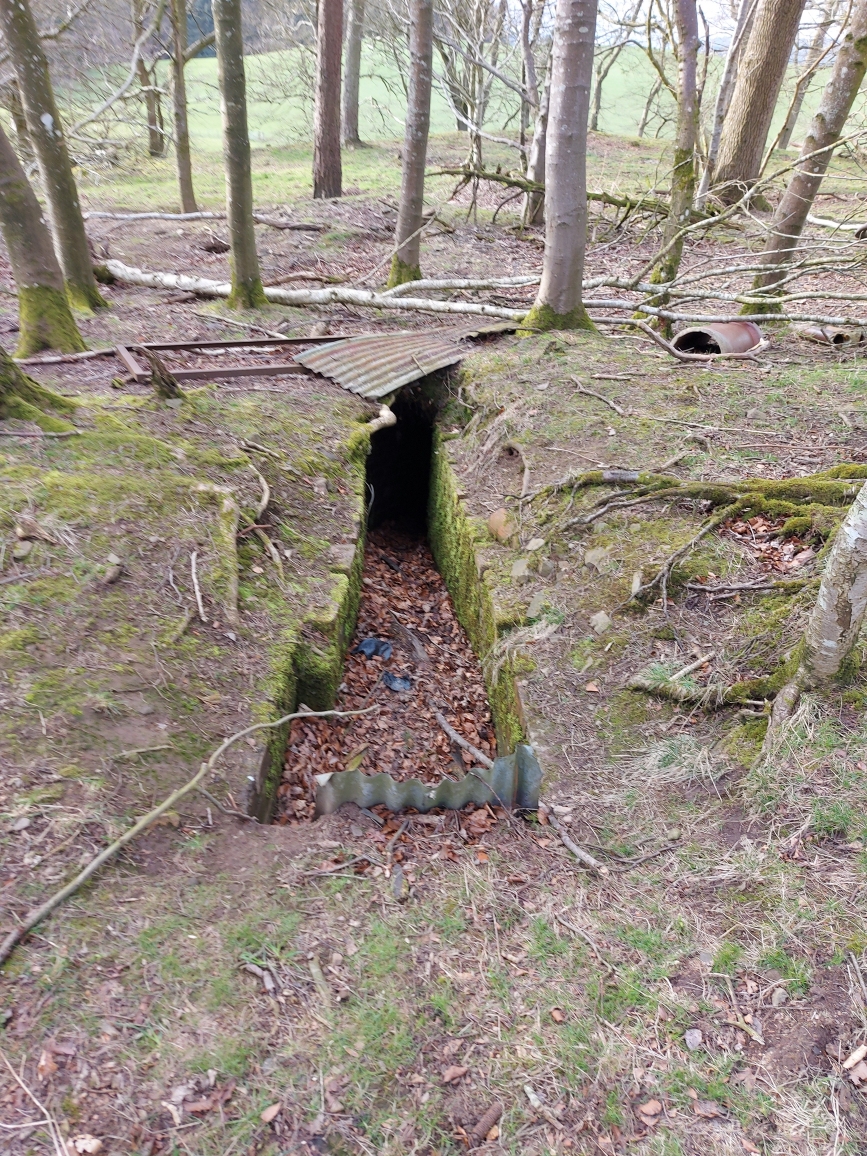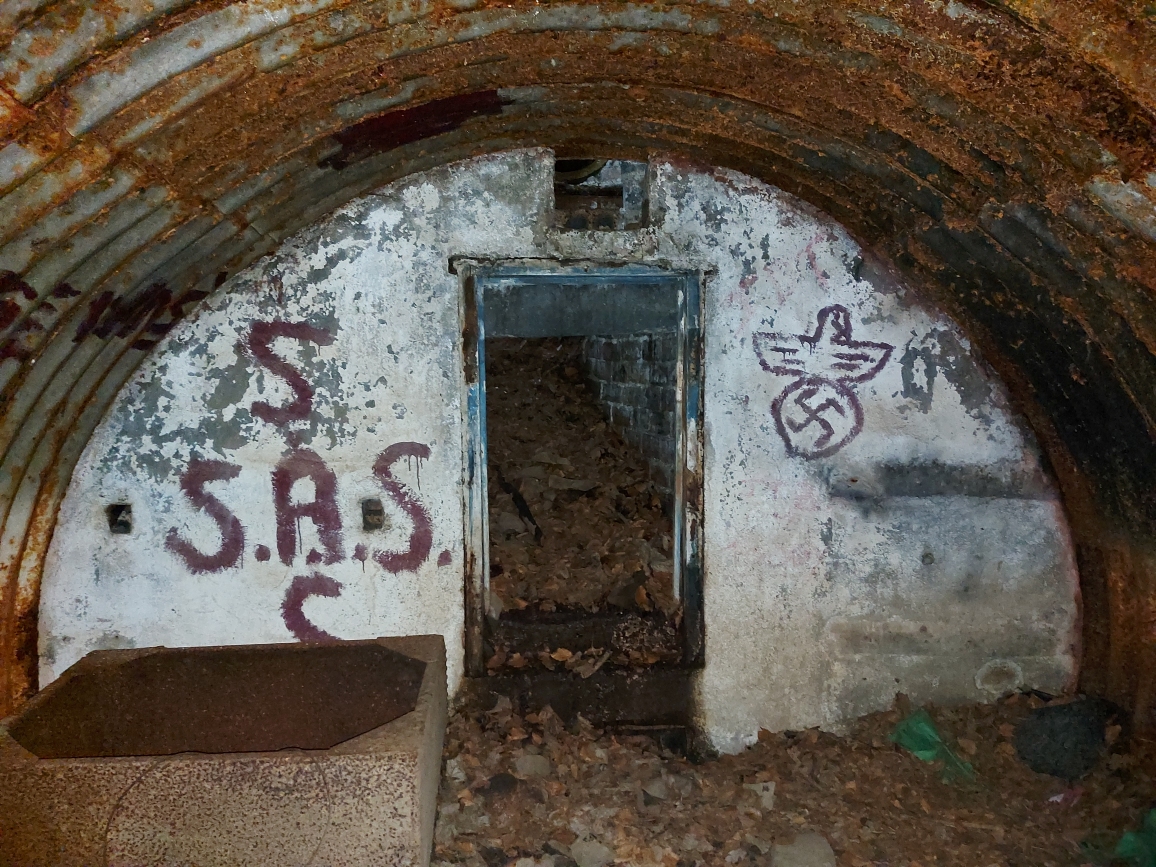The town of Selkirk lies 5 miles south of Galashiels. It is a central town in the Scottish Borders with Jedburgh, Melrose and Kelso all nearby and having main roads that pass through Selkirk linking the local infrastructure.
The Patrol's OB was located to the south of the town on wooded high ground over looking the A7 main Edinburgh to Carlisle road.
The OB has been sited within a high plateau with commanding views to open countryside, thinly wooded and has signs of felling in its past, suggesting there was a more thicker woodland there once. Looking west the town of Selkirk can just be glimpsed, but this is no guarantee it was visible during the OB’s use and occupation.
The Observational Post would have been sited to the south of the OB as I found cables from the OB heading south, but could not locate the actual OP; this is the higher ground and gives an excellent field of view out over the reservoir and beyond to the A699 some distance away. The Patrol base is situated near to the other Borders Patrols of Newton St Boswells to the east and Galashiels to the north.
Overall the OB is in a very good state of preservation, graffiti of mixed genre adorns the inner main chamber (some images edited by us to avoid offence), some evidence of a small fire at one time, as some timbers in the entrance tunnel charred, which is minimal, along with some deterioration of the main ventilation pipes which are very large and heavy and some of them have been broken through time possibly by tree root movement or by human interaction.
There is very tight access down a brick built tunnel, which then opens up once inside the main chamber to standing height, doorway into main chamber has original blue painted door frames, with cables for internal lighting still in situ.
Bunk beds are still in situ, less the wooden frames, all that remain is the metal frame/springs, but complete. Fresh water tank is still inside and has some debris inside, door hinges, cable, and some timber possibly from a door or bunk bed frame supports. The curved entrance tunnel is very narrow and makes access daunting as you are going into ink blackness, but once passed the initial thought of shimmying down the shaft its actually okay, some leaf litter at the main entrance and within the main chamber. The construction and use of material is impressive and the layout and design of this OB utilised a few thousand bricks used during its construction, as well as the corrugated sheeting and other materials used, which would have needed a good cover story for any nosey locals? The farmer, Angus Oliver, must have known about the work being done on his land.
The OB was an "Elephant" type shelter with a long escape tunnel made of brick walls with metal sheeting forming the roof, this was in turn covered with soil and plants to hide it.
There is open access in Scotland so a visit is legally possible though the land owners are not keen on visitors.
Thanks to David Constantine for video footage.
Selkirk Patrol
The Borders Auxiliary Units had a plan to try and control all the main roads in the area in the event of a German airborne attack.
Rail transport being another obvious choice, the Selkirk Branch was close by at Boleside later named Abbotsford ferry, the intermediate station at Lindean being used, as the Selkirk branch serviced the other Border stations including Galashiels and Newton St Boswells. Although the stations were earmarked to close in 1930’s they were still being utilised during the war, especially by Military transport, therefore both road and rail supply routes being the main favoured targets along with crossing points on the Rivers Ettrick and Tweed
Major Peter Forbes, Intelligence Officer for the Scottish Borders was tasked with setting up Patrols, either side of these main arteries, be it road or rail, with combined efforts from Patrol bases in the vicinity should they be required to regroup/restructure due to post invasion losses. With no RAF Bases nearby, the nearest one being 27 miles away at Charterhall, other Patrols at Duns and Greenlaw were tasked with ‘looking after’ this airfield.
Other targets could have included Charlesfield munitions and fuel depot and Lindean Reservoir.
Some of the Patrol went to Coleshill House for specialist courses but this stopped due to the distance and time taken to get there. From mid 1942 Coleshill sent out written and practical tests for the Patrols to undertake. These were supervised by Group Commanding Officers or the Intelligence Officer.
Training also took place at Monksford Stables which was Major Forbes’s HQ, some 9 miles away at Newton St Boswells, including the extensive grounds being one area used for training.
Other areas nearby were used for demolition training such as remote disused quarries and a rifle range close-by; also on occasion venturing into Northumberland and training on the Otterburn ranges some 45 miles away, although this was not a regular occurrence.
Weapons issued to the Patrol would have included Sten Machine Gun, .38 Smith & Wesson pistols, Thompson Sub Machine Gun and Fairbairn Sykes fighting knives.
Some of the Patrol did guard duty at Balmoral for the Royal Family in 1944
They also went to the Isle of Wight as the Island garrison for the first two weeks in June 1944.
David Constantine
Roy Brown, "Fell Wanderer",
Landowner name withheld
Major Peter Forbes IO for the Scottish Borders.
Scotland’s People website
Major Hancock files
TNA ref WO199/3388 Nominal roll
David Blair,
James Towill (photos and leg work)
